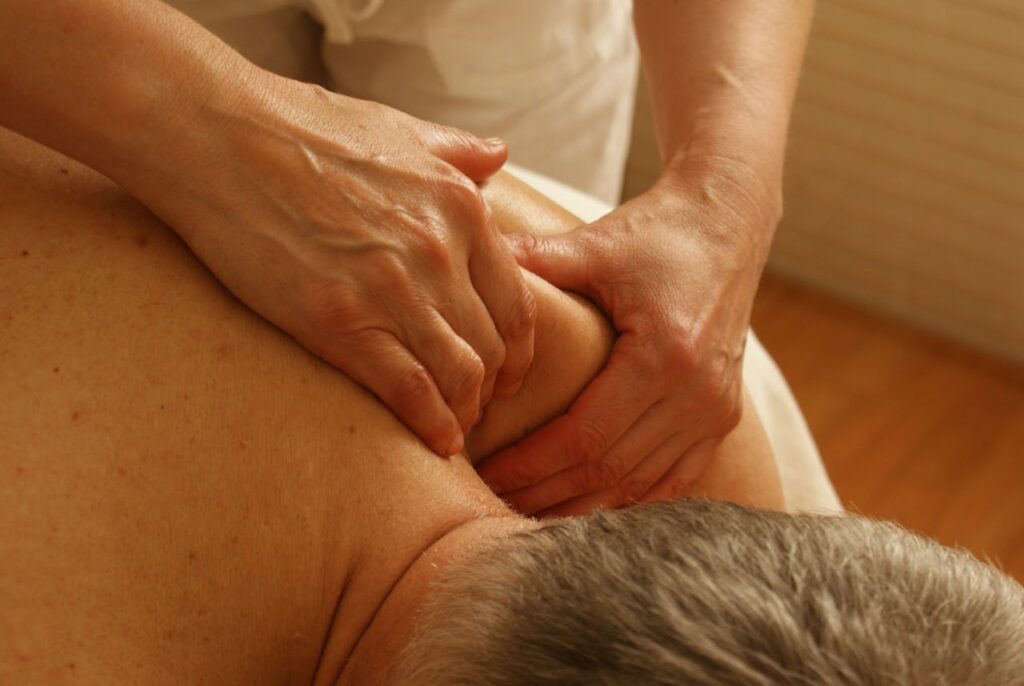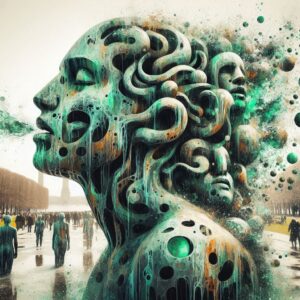
Explore & Play
Discover interesting topics and solve the accompanying crossword puzzle.
Treatment Crossword | Diverse therapies and related insights
Table of Contents
Treatment Crossword
You can either fill in the crossword puzzle directly on this page or click the button in the bottom right corner to print it for free.

How Different Treatments Address Physical and Mental Health Challenges
In today’s diverse healthcare landscape, a multitude of treatment options are available to address physical and mental health challenges. By exploring these treatments, we gain a better understanding of how they contribute to overall well-being. To make this journey more engaging, we’ve even designed a crossword puzzle that incorporates key treatments discussed in this article.
The Dual Nature of Health: Physical and Mental Interconnection
Recognizing the Connection Between Body and Mind
Physical and mental health are deeply intertwined, with treatments often addressing both simultaneously. For instance, chronic pain can lead to depression, while stress may manifest as physical ailments like headaches or digestive issues.
Holistic Approaches to Wellness
Holistic treatments such as meditation and reflexology emphasize the mind-body connection. These therapies aim to heal not just the symptoms but the root causes, fostering harmony within the individual.
Traditional Healing Methods
Traditional healing methods have been used for centuries and continue to play a vital role in the world of wellness today. These methods are often based on ancient wisdom and the understanding that the body and mind are interconnected, and that healing requires balance. While modern medicine has evolved significantly, many people still turn to traditional practices for both preventive care and treatment of various health conditions. Below, we explore some of the most widely recognized traditional healing methods.
Acupuncture: An Ancient Practice
Acupuncture is one of the most well-known and widely practiced traditional healing methods. Originating from ancient China, acupuncture involves inserting thin needles into specific points on the body to balance energy flow, or “qi.” The principle behind acupuncture is that by stimulating certain points, the body’s natural healing abilities are activated, leading to pain relief, improved function, and enhanced overall health. It’s commonly used to treat conditions like chronic pain, headaches, anxiety, and digestive issues. While there is still some debate about the scientific mechanisms behind acupuncture, numerous studies suggest its effectiveness in managing pain and promoting relaxation.
Herbalism: Nature’s Pharmacy
Herbalism, or the use of plants for medicinal purposes, is another cornerstone of traditional healing. This practice dates back thousands of years, with herbs being used to treat a wide variety of conditions from simple colds to more complex ailments like high blood pressure and mental health disorders. Herbal medicine can take many forms, including teas, tinctures, capsules, and poultices. For example, chamomile is commonly used to calm nerves and promote sleep, while ginseng is believed to increase energy and improve mental clarity. As people look for more natural and holistic alternatives to pharmaceutical drugs, herbalism is gaining renewed attention as a valuable treatment option for improving health and well-being.
Reflexology and Aromatherapy
Reflexology and aromatherapy are two other traditional healing techniques that are gaining popularity worldwide. Reflexology involves applying pressure to specific areas of the feet, hands, or ears that correspond to different organs and systems in the body. The idea is that stimulating these areas can promote healing and relieve discomfort in corresponding parts of the body. Reflexology is commonly used to manage stress, improve circulation, and alleviate conditions like back pain and insomnia.
Aromatherapy, on the other hand, uses essential oils derived from plants to promote physical and emotional well-being. The oils are either inhaled or applied topically, with each oil offering different benefits. Lavender, for example, is known for its calming properties, while eucalyptus is often used to clear sinuses and support respiratory health. Aromatherapy is commonly used in combination with other treatments to enhance relaxation, reduce anxiety, and improve sleep quality.
Modern Medical Treatments for Physical Health
In contrast to traditional healing methods, modern medical treatments are typically grounded in scientific research and technology. These treatments are often more standardized and rely on advancements in pharmaceuticals, surgery, and medical technology to diagnose, treat, and manage a wide variety of physical health issues. While modern medicine has brought about significant improvements in health outcomes, it’s also important to note that it often works in conjunction with traditional healing methods, providing a more comprehensive approach to wellness.
Advanced Therapies for Chronic Illnesses
For individuals suffering from chronic illnesses such as cancer, diabetes, and heart disease, advanced therapies play a critical role in improving quality of life and managing symptoms. Treatments like chemotherapy, radiation therapy, and immunotherapy are integral components of cancer treatment, aiming to target and eliminate cancer cells. Chemotherapy uses powerful drugs to destroy or slow the growth of cancerous cells, while radiation therapy employs high-energy radiation to kill or damage cancer cells. Immunotherapy, on the other hand, boosts the body’s immune system to help fight cancer more effectively. These treatments, although challenging and often accompanied by side effects, have significantly increased survival rates for many cancer patients and continue to be refined.
Surgery and Skin Grafting
Surgical interventions are among the most common modern treatments for a wide range of health conditions, from broken bones to life-threatening diseases. Surgeries can be minimally invasive, using small incisions and advanced technology, or more traditional, involving larger cuts. Surgical procedures are performed to remove tumors, repair damaged organs or tissues, and replace worn-out body parts like joints or heart valves. One important example is skin grafting, a medical procedure used to treat severe burns and wounds. Skin grafting involves transplanting healthy skin from one part of the body to another to help promote healing and prevent infection.
Dialysis and Blood Transfusions
Dialysis and blood transfusions are life-saving treatments used for individuals with severe kidney or blood-related conditions. Dialysis is a procedure used to filter waste and excess fluids from the blood when the kidneys can no longer perform this function on their own, as in cases of kidney failure. Dialysis patients must typically undergo treatment multiple times a week, and although it can be a life-sustaining therapy, it often requires significant lifestyle adjustments.
Blood transfusions are another common treatment used in modern medicine to replace lost blood or blood components. In cases of trauma, surgery, or certain medical conditions like anemia, blood transfusions can replenish the blood supply and restore essential components like red blood cells, platelets, or plasma. Blood transfusions are crucial in saving lives during emergencies, surgeries, and cancer treatments.
Physical Therapy and Rehabilitation
While surgery and medical procedures play an essential role in treating injuries and chronic conditions, physical therapy and rehabilitation are key in helping patients recover and regain functionality. Physical therapy involves a series of exercises and manual therapies designed to improve movement, strength, and flexibility. It is commonly prescribed for patients recovering from surgery, sports injuries, or neurological conditions like strokes. The goal is to restore mobility, alleviate pain, and help the patient return to normal daily activities.
Rehabilitation is a broader term that includes physical therapy as well as other treatments such as occupational therapy, speech therapy, and vocational therapy. Occupational therapy helps individuals regain the ability to perform daily tasks after injuries or illnesses, while speech therapy focuses on improving communication skills for those with speech disorders. Together, these therapies contribute to a holistic recovery plan that promotes long-term health and wellness.
Mental Health Treatments
Mental health is a critical aspect of overall well-being, and just like physical health, it requires appropriate care and attention. Over the years, various treatments and therapies have been developed to address a range of mental health conditions, from depression and anxiety to schizophrenia and bipolar disorder. Mental health treatments are designed to alleviate symptoms, improve coping mechanisms, and restore balance, ultimately enhancing the quality of life for individuals struggling with mental health challenges. These treatments can be broadly categorized into therapy-based interventions and pharmacological treatments.
Psychotherapy: Talking Your Way to Healing
Psychotherapy, often referred to as talk therapy, is one of the most effective and widely used methods for treating mental health conditions. Psychotherapy involves structured conversations between a patient and a trained therapist to address emotional issues, behavioral patterns, and mental health disorders. It can be performed individually, with a group, or with family members, depending on the condition being treated and the preferences of the patient.
Cognitive Behavioral Therapy (CBT) is one of the most well-known types of psychotherapy. CBT is based on the idea that our thoughts influence our emotions and behaviors. It focuses on identifying and challenging negative thought patterns and replacing them with healthier, more balanced ways of thinking. CBT has been proven effective for conditions like anxiety, depression, post-traumatic stress disorder (PTSD), and obsessive-compulsive disorder (OCD).
Dialectical Behavior Therapy (DBT) is another form of therapy that is especially useful for individuals with borderline personality disorder (BPD) or those struggling with emotional regulation. DBT combines cognitive-behavioral techniques with mindfulness practices and emphasizes acceptance and change. This therapy focuses on improving interpersonal relationships, emotional regulation, and distress tolerance.
Medication for Mental Health
Pharmacological treatments play a critical role in managing mental health conditions, especially when therapy alone may not be sufficient. Medications are prescribed by healthcare providers to treat conditions such as depression, anxiety, bipolar disorder, and schizophrenia. These medications are designed to correct chemical imbalances in the brain that may contribute to the symptoms of mental health disorders.
Antidepressants, such as selective serotonin reuptake inhibitors (SSRIs), are commonly used to treat depression, anxiety, and other mood disorders. SSRIs work by increasing the levels of serotonin in the brain, a neurotransmitter that plays a role in mood regulation.
Antipsychotic medications are prescribed for individuals with schizophrenia or other disorders involving psychosis. These medications help regulate brain chemicals, reducing symptoms like hallucinations, delusions, and disorganized thinking.
Mood stabilizers are often used to treat bipolar disorder, helping to manage extreme mood swings, from manic episodes to depressive episodes. Lithium is one of the most well-known mood stabilizers.
Medication can be an essential tool in managing mental health disorders, but it is often used in combination with therapy for the best results. Finding the right medication and dosage can be a process of trial and error, so regular check-ins with a healthcare provider are essential to monitor progress and adjust treatments accordingly.
Alternative Therapies for Mental Health
In addition to psychotherapy and medication, many individuals turn to alternative therapies to help manage mental health conditions. These therapies focus on promoting mental and emotional well-being through non-traditional means.
Mindfulness-Based Stress Reduction (MBSR) is an approach that integrates mindfulness meditation and awareness practices to reduce stress and promote emotional regulation. Mindfulness has been shown to help individuals cope with anxiety, depression, and PTSD by teaching them to stay present in the moment and cultivate a non-judgmental awareness of their thoughts and emotions.
Art therapy is another alternative treatment used to help individuals express and process their emotions. It involves using creative techniques like drawing, painting, or sculpture to explore feelings that may be difficult to verbalize. Art therapy can be particularly helpful for individuals with trauma, depression, or anxiety.
Music therapy utilizes music as a form of expression and emotional release. Whether through listening to music or actively participating in music-making, music therapy allows individuals to connect with their emotions and process experiences in a therapeutic way. It has been used to treat individuals with depression, anxiety, and PTSD.
Therapies for Rehabilitation and Recovery
Rehabilitation and recovery therapies are essential for individuals dealing with physical or mental health challenges. These therapies focus on restoring independence, improving quality of life, and facilitating a return to daily activities. Rehabilitation therapies are particularly useful for individuals recovering from injury, surgery, or addiction. These therapies help rebuild strength, improve mobility, and support psychological healing.
Physical Rehabilitation: Restoring Functionality
Physical rehabilitation is crucial for individuals recovering from injuries, surgeries, or chronic conditions that impair movement or physical functionality. Rehabilitation therapies aim to restore mobility, reduce pain, and improve strength, so individuals can regain independence and return to their daily routines.
Physical therapy (PT) is a type of rehabilitation therapy that focuses on restoring physical function through exercises, stretches, and manual techniques. PT is commonly used for patients recovering from surgery, stroke, fractures, or neurological disorders. Physical therapists work with patients to improve mobility, strengthen muscles, and enhance coordination, enabling them to move more freely and reduce the risk of further injury.
Occupational therapy (OT) is another form of rehabilitation that helps individuals regain the skills needed to perform everyday tasks, such as dressing, cooking, and working. Occupational therapists work with patients to improve fine motor skills, cognitive abilities, and adaptive strategies to make daily activities easier and more manageable.
Addiction Rehabilitation: Overcoming Substance Dependency
Addiction rehabilitation is a vital component of recovery for individuals struggling with substance abuse or addiction. Treatment programs for addiction typically involve a combination of therapy, medical intervention, and support groups to help individuals overcome their dependence and regain control over their lives.
Detoxification is often the first step in addiction recovery. This process involves safely removing substances from the body under medical supervision. Detoxification is typically followed by a comprehensive treatment plan that includes therapy, support groups, and lifestyle changes to promote long-term recovery.
Cognitive-behavioral therapy (CBT) is frequently used in addiction treatment to help individuals understand the thoughts and behaviors that contribute to their substance use. CBT helps patients develop healthier coping strategies and avoid triggers that may lead to relapse.
Group therapy and support groups, such as 12-step programs like Alcoholics Anonymous (AA) or Narcotics Anonymous (NA), provide individuals with a sense of community and accountability during their recovery journey. These groups allow people to share experiences, learn from others, and build a strong support network.
Mental Health Rehabilitation: Rebuilding Emotional Strength
Mental health rehabilitation is focused on helping individuals recover from mental health disorders, particularly after experiencing a crisis or significant life event, such as a trauma or a mental breakdown. Mental health rehab often involves a combination of therapeutic interventions and support systems designed to help patients rebuild emotional resilience and improve coping skills.
Trauma-focused therapy is used for individuals recovering from traumatic experiences, such as abuse, assault, or loss. This type of therapy helps patients process their emotions and find ways to heal from the emotional wounds caused by trauma. Techniques like EMDR (Eye Movement Desensitization and Reprocessing) have been found to be effective in helping individuals overcome trauma.
Family therapy is another important component of mental health rehabilitation, as it involves the patient’s family in the healing process. It helps family members understand the mental health condition, improve communication, and provide a strong support system for the patient’s recovery.
Rehabilitation for Chronic Illnesses: Managing Long-Term Conditions
Chronic illness rehabilitation focuses on helping individuals manage long-term health conditions such as arthritis, diabetes, and heart disease. Rehabilitation programs for chronic illnesses typically involve a combination of physical activity, lifestyle changes, and emotional support to improve the quality of life and manage symptoms.
Cardiac rehabilitation is a program specifically designed for individuals recovering from heart attacks, surgery, or other heart-related conditions. It includes exercise, education on heart-healthy habits, and psychological support to help patients adjust to their new lifestyle and prevent further complications.
Diabetes education and rehabilitation help individuals with diabetes manage their condition by teaching them how to monitor blood sugar levels, make healthy dietary choices, and incorporate physical activity into their routine. These programs also provide support for mental health challenges related to living with a chronic condition.
Holistic and Preventive Treatments
As the healthcare landscape continues to evolve, there has been a growing emphasis on holistic and preventive treatments. These approaches focus not only on treating illness but also on maintaining overall well-being and preventing health problems before they arise. Holistic and preventive treatments encompass a wide range of strategies, from lifestyle changes and diet adjustments to alternative therapies and mindfulness practices. By focusing on the whole person—body, mind, and spirit—these treatments aim to enhance long-term health, reduce the risk of chronic conditions, and improve overall quality of life.
The Role of Lifestyle Changes in Preventive Care
One of the most significant aspects of preventive healthcare is the promotion of healthy lifestyle habits. Simple changes in daily routines can significantly reduce the risk of developing chronic illnesses, such as heart disease, diabetes, and cancer. Lifestyle modifications like regular physical activity, a balanced diet, and adequate sleep play a central role in preventing these conditions and enhancing overall well-being.
Physical activity is one of the most effective preventive measures. Engaging in regular exercise not only helps maintain a healthy weight but also reduces the risk of chronic diseases like cardiovascular disease, diabetes, and certain types of cancer. Exercise promotes better circulation, strengthens the immune system, and helps manage stress, which can contribute to the prevention of many health conditions.
Healthy eating is another key component of preventive healthcare. A diet rich in fruits, vegetables, whole grains, lean proteins, and healthy fats provides essential nutrients that support optimal bodily function and reduce the risk of chronic diseases. For instance, diets high in antioxidants, such as those found in fruits and vegetables, can help protect the body from oxidative stress and inflammation, both of which are linked to conditions like heart disease and cancer.
Sleep hygiene is often overlooked but is essential for maintaining physical and mental health. Poor sleep patterns are associated with an increased risk of numerous health problems, including obesity, heart disease, and mental health disorders like depression and anxiety. Ensuring adequate and quality sleep can play a significant role in preventing these issues and improving overall quality of life.
Alternative Therapies and Holistic Approaches
In addition to traditional lifestyle changes, many people turn to alternative therapies to support their physical and mental health. These holistic treatments aim to treat the whole person rather than focusing on individual symptoms, taking into account factors like emotional well-being, spirituality, and environmental influences. While these therapies may not always replace conventional medicine, they can complement other treatments and offer a more integrated approach to healthcare.
Acupuncture is one such holistic treatment that has been practiced for thousands of years in traditional Chinese medicine. It involves inserting fine needles into specific points on the body to balance the flow of energy (or “Qi”) and stimulate the body’s natural healing abilities. Acupuncture is often used to treat chronic pain, stress, and conditions like insomnia, digestive disorders, and migraines.
Chiropractic care is another popular alternative treatment that focuses on diagnosing and treating musculoskeletal disorders, particularly those affecting the spine. Chiropractors use hands-on adjustments to align the spine and improve overall health. This approach is often sought for conditions like back pain, neck pain, and headaches. It’s based on the principle that spinal health is closely linked to overall well-being and that proper alignment can help the body function at its best.
Herbal medicine has also gained recognition in both traditional and modern healthcare settings. Many plants and herbs contain compounds that can support immune function, reduce inflammation, and promote relaxation. For example, herbs like turmeric and ginger have natural anti-inflammatory properties, while lavender and chamomile are commonly used to ease anxiety and promote relaxation.
Mind-body therapies, such as yoga and meditation, are increasingly recognized as effective tools for managing stress and enhancing physical and mental health. These practices involve deep breathing, mindfulness, and controlled movement to improve flexibility, reduce muscle tension, and promote mental clarity. Mind-body approaches are particularly effective for managing stress-related conditions, such as anxiety, depression, and chronic pain.
The Integration of Holistic and Conventional Medicine
The integration of holistic and conventional medicine, often referred to as integrative medicine, aims to combine the strengths of both approaches. In integrative medicine, healthcare providers focus on treating the whole person, addressing physical, emotional, and spiritual needs while using evidence-based practices from both traditional and alternative medicine.
For instance, an individual with chronic pain may receive a combination of physical therapy and acupuncture treatments, along with lifestyle recommendations such as exercise, diet changes, and stress management techniques. Integrative medicine emphasizes the importance of personalized care and encourages collaboration between healthcare providers from various disciplines.
One key aspect of integrative medicine is patient empowerment. By offering patients a broader range of treatment options, they are encouraged to take an active role in their own healing process. This approach also prioritizes prevention, aiming to reduce the need for more invasive treatments by addressing underlying health issues before they develop into more serious conditions.
Innovations Shaping the Future of Healthcare
The future of healthcare is marked by rapid advancements in technology and innovation, which promise to revolutionize how we approach both treatment and prevention. From artificial intelligence and telemedicine to breakthroughs in genetics and personalized medicine, these innovations have the potential to dramatically improve outcomes, reduce costs, and enhance the patient experience. As the healthcare landscape evolves, we can expect these innovations to play an increasingly central role in shaping how treatments are delivered and how healthcare systems are structured.
Telemedicine: Bridging the Gap Between Patients and Providers
Telemedicine, or telehealth, has seen a surge in popularity in recent years, especially during the COVID-19 pandemic. This technology allows patients to consult with healthcare providers remotely, reducing the need for in-person visits. Telemedicine can be used for a wide range of healthcare services, from routine checkups and mental health therapy to specialist consultations and follow-up care.
One of the key benefits of telemedicine is increased accessibility. Patients in remote or underserved areas can now access healthcare providers without having to travel long distances. This can significantly improve health outcomes, especially for individuals with chronic conditions or limited access to healthcare services.
Telemedicine also offers convenience and flexibility, allowing patients to receive care from the comfort of their own homes. This is particularly beneficial for individuals with mobility issues, busy schedules, or those who have difficulty accessing traditional healthcare facilities.
Personalized Medicine: Tailoring Treatments to Individual Needs
Personalized medicine, also known as precision medicine, represents a major shift in how treatments are developed and delivered. Rather than using a one-size-fits-all approach, personalized medicine uses genetic, environmental, and lifestyle data to tailor treatments to an individual’s unique characteristics.
Advances in genomics have made it possible to identify specific genetic markers that may influence how a person responds to medications or treatments. This information allows healthcare providers to prescribe medications that are more effective and have fewer side effects. For example, cancer treatments are increasingly being personalized based on the genetic profile of the tumor, enabling more targeted therapies with improved outcomes.
Pharmacogenomics, the study of how genes affect an individual’s response to drugs, is one area of personalized medicine that has shown great promise. By understanding a patient’s genetic makeup, doctors can predict which medications will work best for them, reducing the trial-and-error process that is often associated with drug prescriptions.
Artificial Intelligence and Machine Learning in Healthcare
Artificial intelligence (AI) and machine learning (ML) are transforming the healthcare industry by improving diagnostic accuracy, predicting outcomes, and streamlining administrative processes. AI algorithms can analyze vast amounts of data, such as medical imaging, genetic information, and patient records, to identify patterns and make predictions that would be difficult for human providers to detect.
For example, AI-powered diagnostic tools are already being used to detect conditions like cancer, heart disease, and neurological disorders by analyzing medical images such as X-rays, MRIs, and CT scans. These tools can help identify issues early, when they are most treatable, and can support healthcare providers in making more accurate and timely diagnoses.
Machine learning algorithms are also being used to predict patient outcomes, such as the likelihood of developing a chronic condition or the risk of readmission after surgery. These predictions can help healthcare providers make more informed decisions and allocate resources more effectively.
Robotics and Automation in Surgery and Rehabilitation
Robotics and automation are revolutionizing surgery and rehabilitation, providing greater precision, improving outcomes, and reducing recovery times. Robotic-assisted surgery allows surgeons to perform procedures with greater accuracy, minimizing the need for large incisions and reducing the risk of complications.
One example is robotic-assisted minimally invasive surgery, which uses robotic systems to perform delicate procedures with small incisions. This technique is used for a variety of surgeries, including those for cancer, heart conditions, and joint replacements. It offers patients less pain, quicker recovery times, and a lower risk of infection.
In the field of rehabilitation, robotic exoskeletons are being developed to help individuals with spinal cord injuries or other mobility impairments regain movement. These wearable devices assist patients in walking and performing everyday activities, enhancing their independence and improving their overall quality of life.
From Treatment to Transformation: Taking the Next Step
From ancient practices like acupuncture to cutting-edge innovations like prosthetics, treatments for physical and mental health challenges have come a long way. By understanding these options, you’re better equipped to make informed healthcare decisions.
Try your hand at our crossword puzzle to test your knowledge of treatments and share your thoughts. It’s a great way to reflect on the diverse paths to healing!
Share to...
I hope you enjoy the content.
Want to receive our daily crossword puzzle or article? Subscribe!
You may also be interested in
Share to…
Want to receive our daily crossword puzzle?
-
Jigsaw Puzzles
Art Nouveau Jigsaw Puzzle with Betta Fish in Lush Garden Scene 250 | 300 | 500 Pieces
kr 348,00 – kr 439,00Price range: kr 348,00 through kr 439,00 Select options This product has multiple variants. The options may be chosen on the product page -
Jigsaw Puzzles
Art Nouveau Puzzle – White Rabbit in a Whimsical Garden 250 | 300 | 500 Pieces
kr 348,00 – kr 439,00Price range: kr 348,00 through kr 439,00 Select options This product has multiple variants. The options may be chosen on the product page -
Jigsaw Puzzles
Vigeland Park Fantasy Puzzle 250 | 300 | 500 Pieces
kr 348,00 – kr 439,00Price range: kr 348,00 through kr 439,00 Select options This product has multiple variants. The options may be chosen on the product page

















